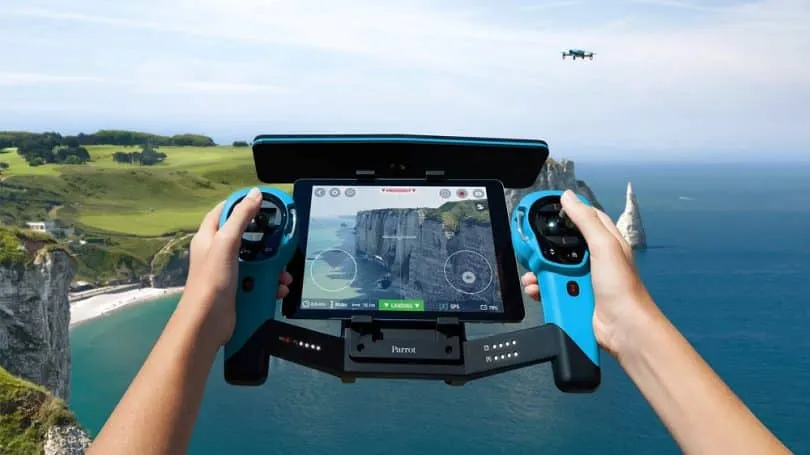Most of the time, Drone pilots are facing different kinds of challenges when achieving satisfying flight. The drone range barrier and maintaining a strong and reliable connection is one of them. Therefore, here we have compiled a list of 12 expert tips to maximize your drone flying range and strengthen the connection. These tips will help you fly with confidence and take your drone further than ever before.
- Make sure your drone’s battery is fully charged before flying.
- Fly in optimal weather conditions and avoid flying in high wind or rain.
- Avoid flying in areas with a lot of obstacles that can interfere with the signal.
- Avoid flying in areas with a lot of electromagnetic interference.
- Choose a frequency with less interference.
- Use a high-quality transmitter.
- Use a high-gain, directional antenna/ range extender.
- Use a flight controller with a long-range receiver.
- Fly at a higher altitude.
- Upgrade your drone’s firmware.
- Reduce the number of devices connected to your drone’s Wi-Fi.
- Optimize your drone’s power settings.
1. Make sure your drone’s battery is fully charged before flying.
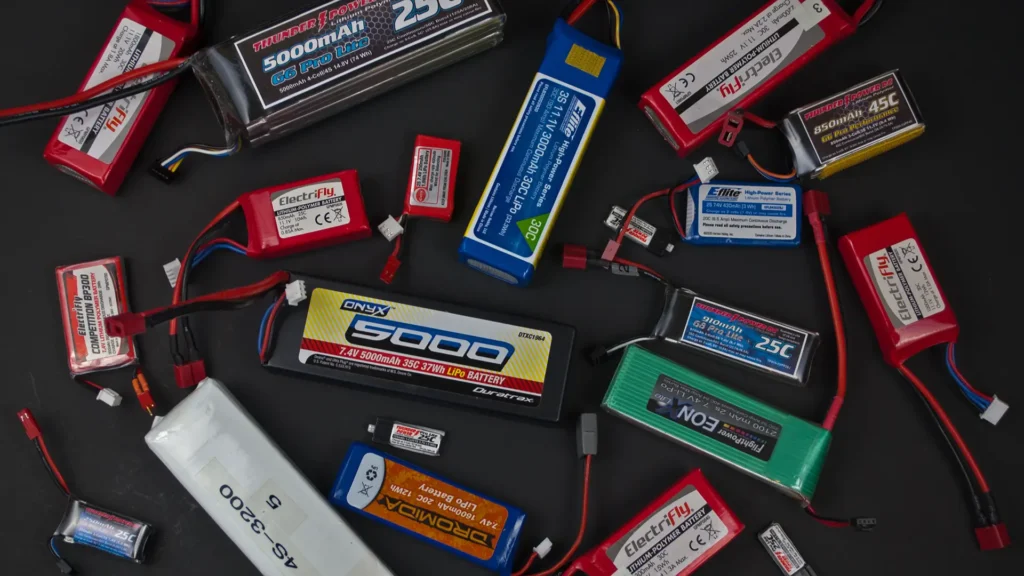
As a fully charged battery provides a maximum amount of power, it gives a huge amount of flight time which is an essential key factor for increasing drone range. When the drone is in flight, the battery power needs to be distributed to motors, electronics, and other systems to keep it stable and functional. As the battery level drops, the operating drone range is decreased because of a lack of power for long-range flights, poor connection, safety precautions, and ease of return to home function. Here are the major reasons proving how a fully charged battery can increase a drone’s range:
- More power: For a long range of flights, a huge amount of power supply is required for a stronger connection and faster performance. So with a fully charged battery, the drone can fly faster, farther, and for a longer period of time, ultimately extending its range.
- Performance: As a fully charged battery can supply power at its full capacity, the drone can gain the required forces for better speed and stability in long ranges.
- Increased safe range limits: Many drones have safety precautions to handle possible scenarios that the drone could crash. The operating range limit is one of them. So as the battery level drops the operating range is shrunk by the system to reduce crash possibility and ease the return to home function. So starting with a fully charged battery would allow you the full potential operating range to fly.
2. Fly in optimal weather conditions and avoid flying in high wind or rain.
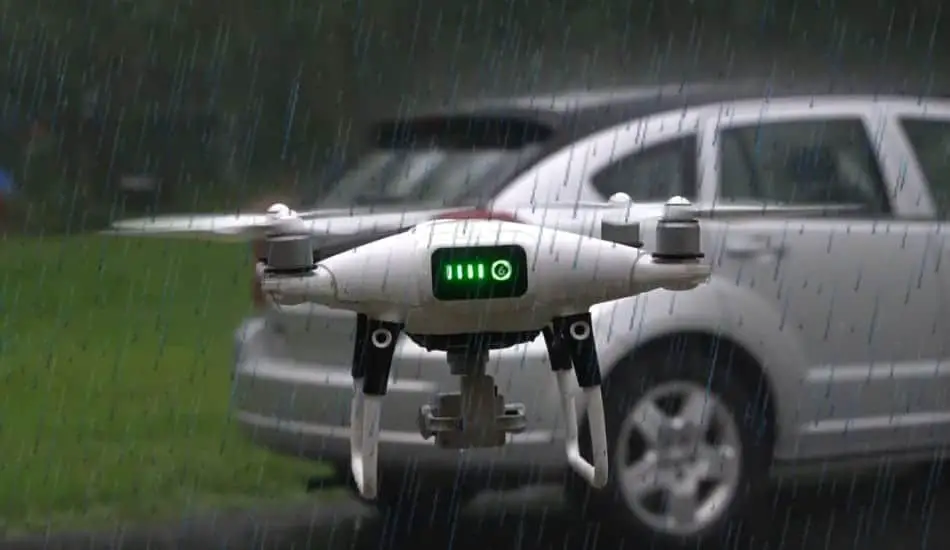
Unsuitable weather conditions like high wind, and rain could negatively affect the operating range by high power usage and interferences. Flying in optimal weather conditions would ensure long-range flight by enhancing its overall performance and negatively impacting factors as explained below.
- Improved battery life and flight time: As heavy power usage occurs while stabilizing and controlling the drone in high wind weather conditions, the battery drains faster and shorten its flight time.
- Reduced wind resistance: Heavy wind resistance and turbulence, make it difficult to maintain stability and control. So, flying the drone in optimal weather conditions with minimal wind can help reduce wind resistance and improve the drone’s range.
- Low radio interference: Such poor weather conditions as rain, snow, or fog, could interfere with radio signals, causing low connection and other connectivity issues which affect the drone’s range. So with optimal weather conditions, you could achieve minimal interference to improve signal strength, ensuring a reliable connection between the drone and remote controller and increasing the drone’s range.
- Better visibility: Better visible weather conditions makes it easy to navigate and control your drone more effectively, reducing the chances of losing connection or crashing while flying the drone further.
3. Avoid flying in areas with a lot of obstacles that can interfere with the signal.
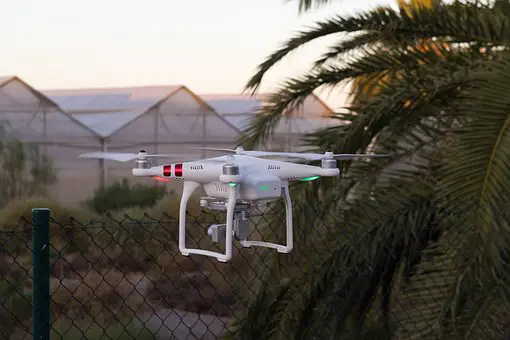
Obstructions like buildings, trees, powerlines, and hills could interfere with the signal of your drone. So by flying in open spaces can increase a drone’s range by reducing interference from obstacles and enhancing the drone’s line of sight. Below are some reasons why you should fly in open spaces to increase your drone’s range.
- Low signal interference: Strong connectivity is a key factor in long-range flights. Flying in open spaces with fewer obstacles, such as trees or buildings (most importantly powerlines), can reduce the possibility of signal interference in long-range flights.
- Extended line of sight: As the drone’s line of sight is less obstructed while flying in open spaces, it can fly further without losing sight of the remote controller.
- More space for maneuvering: As there is less risk of colliding with obstacles in open spaces and provides more room for maneuvering the drone flies further and faster, ultimately extending its range.
4. Avoid flying in areas with a lot of electromagnetic interference.

Electromagnetic interferences negatively affect the wireless connection between the drone and the transmitter. Usually, these electromagnetic interferences occur when flying the drone near power lines, radio transmitters, and other electronic devices. Especially the electromagnetic interferences near powerlines are so strong due to the high voltage electrical current flowing through. These electromagnetic fields interfere with the radio signals communication between the drone and the transmitter and cause signal loss, degraded signal quality, and reduced range.
Here are the best practices to avoid and reduce electromagnetic interference and improve your drone’s range.
- Use an EMI detector to detect areas where the interference is strongest and avoid flying in those areas.
- Fly in open areas away from buildings, metal structures, or other electronic devices to reduce the impact of electromagnetic interference.
- As Electromagnetic interference frequently affects, AM radio frequency, try to adjust the drone’s frequency channel.
5. Choose a frequency with less interference.
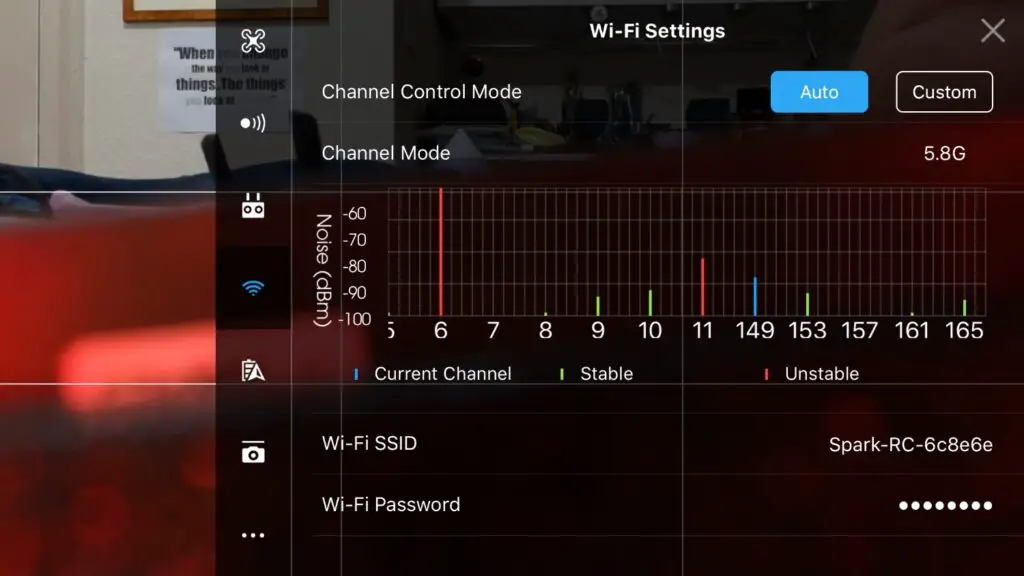
Drones use radio waves at different frequency channels to transmit and receive signals. Some frequencies are more prone to interference than others because of the surrounding environment, other nearby wireless devices, and atmospheric conditions.
- When a drone uses an interference frequency channel to transmit signals, it could cause to degraded signal quality, slower data transfer rates, and reduced range.
- By choosing a frequency with less interference, you’ll be able to transmit signals faster, and more efficiently in long ranges of distance.
- Some drones and controllers allow you to select the frequency manually, while others will automatically select the frequency with the least amount of interference.
6. Use a high-quality transmitter.
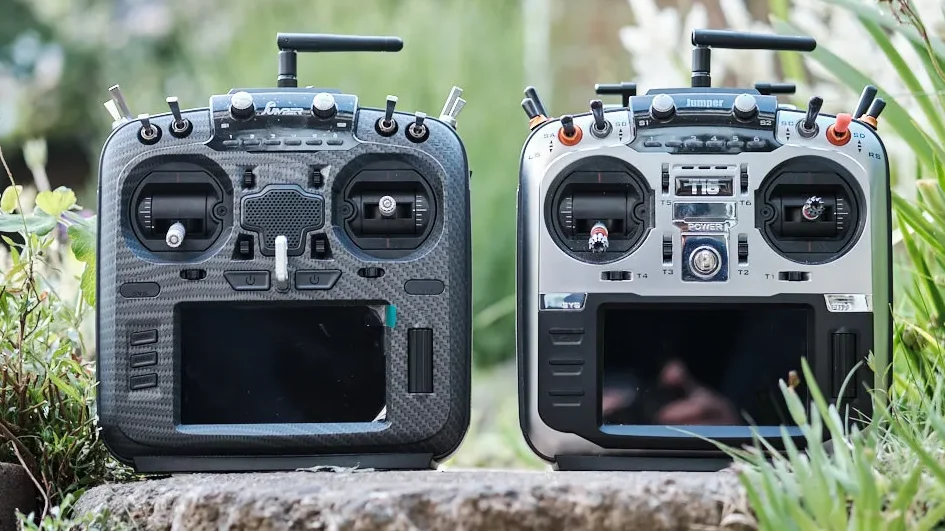
A high-quality transmitter can increase the drone’s operating range as it can communicate with the drone more effectively with the below key features.
- Stronger and more stable connection: As high-quality transmitters use more powerful radio signals to communicate with the drone, the connection is more stronger and stable than the usual connection. Therefore with the use of a high-quality transmitter, the drone can fly further without being weakened or interrupted, resulting in a longer range for the drone.
- Using Multiple channels: Often high-quality transmitter has multiple channels and it can send and receive more data simultaneously and bypass using channels with higher interference for communicating which is really effective in long-range flights.
- Better antennas: High-quality transmitter antennas can focus and direct the radio signal toward the drone more effectively. So signals can travel further and more accurately in long ranges.
7. Use a high-gain, directional antenna/ range extender.
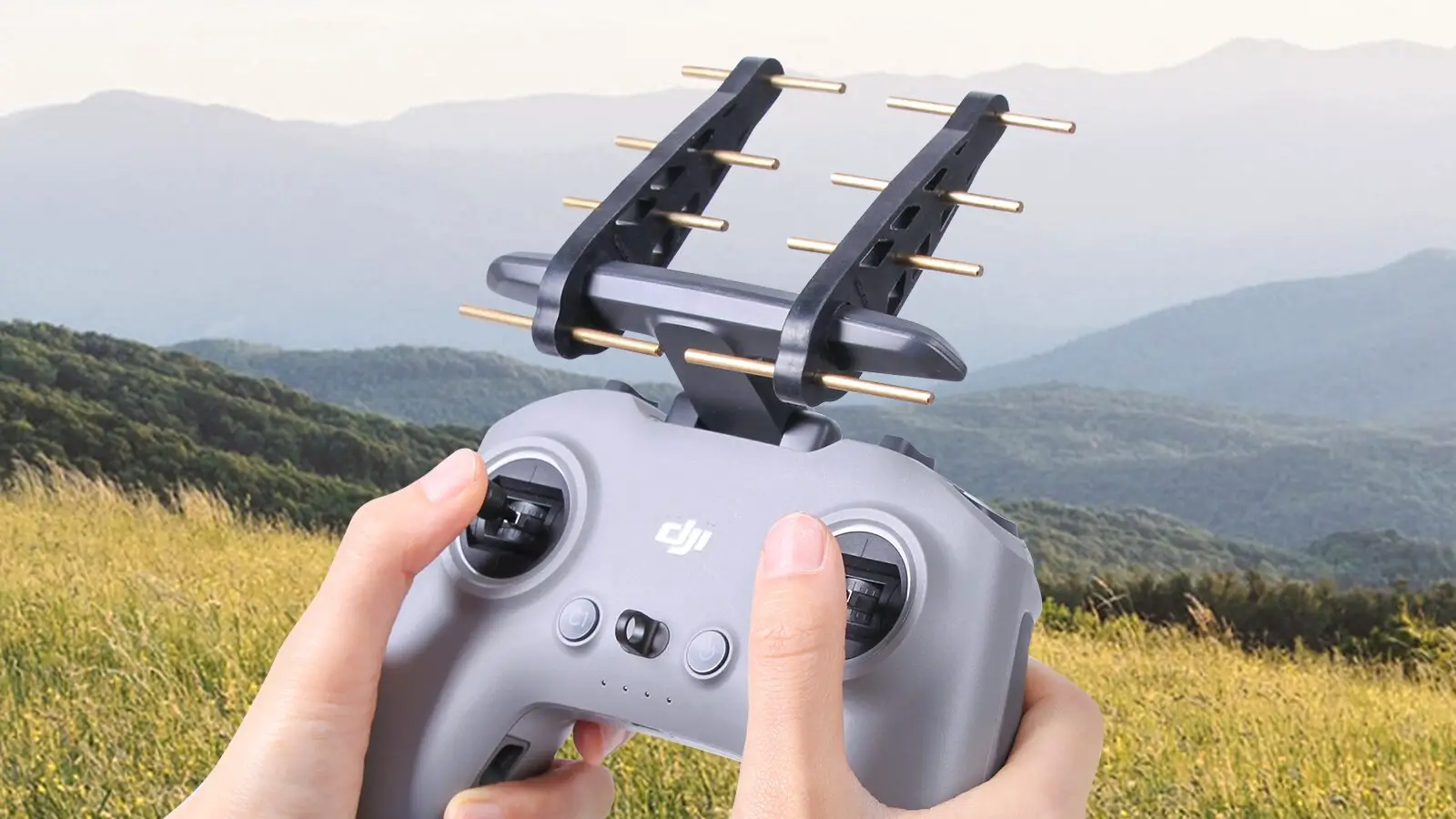
A high-gain directional antenna can focus the radio signal by using a narrower beamwidth than a low-gain antenna in a specific direction, therefore the signal is more concentrated and stronger. Because of that, the drone can receive a stronger signal in long flight ranges. Also, high-gain directional antennas can reduce interference from other signals or obstacles.
Below are several types of high-gain antennas that can be used to increase the range of a drone.
- Yagi Antennas: These are directional antennas structured with several metal elements arranged in a specific pattern. These can increase the drone flight range by focusing the signal in a specific direction and are particularly effective in areas with obstacles or signal interference.
- Patch Antennas: These are rectangular, flat antennas that attach to the drone or the transmitter. Because of their high gain and directional capabilities, they are used to transmit or receive signals over long distances.
- Helical Antennas: These are circularly polarized antennas that provide a strong, directional signal. Often used in long-range drone applications, such as aerial photography or mapping.
Below are two of the commonly used range extenders. Make sure to check compatibility with your specific drone before purchasing a range extender.
- Skyreat Antenna Range Extender.
- Parabolic JOYSOG Range Extender.
8. Use a flight controller with a long-range receiver.
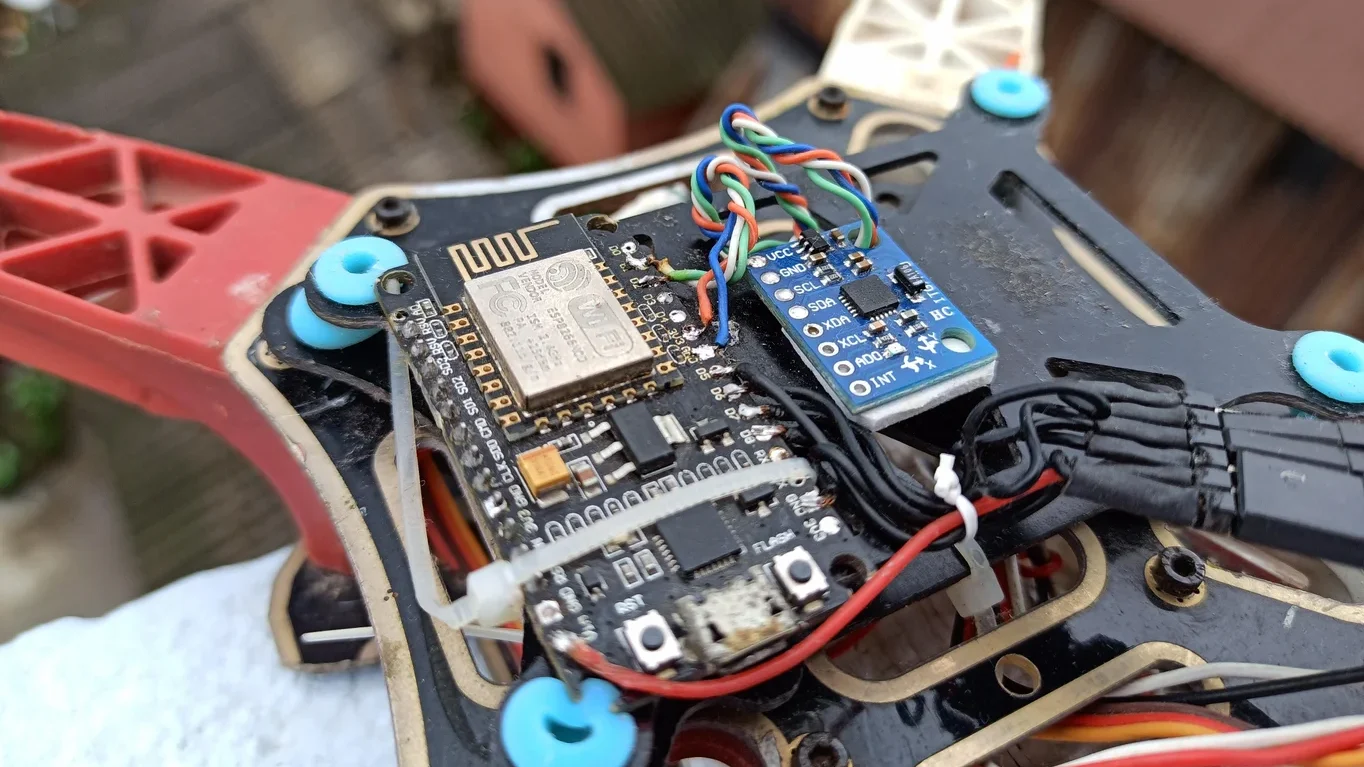
As these flight controllers consist of long-range receivers, they are capable of maintaining strong long-range communication link between your drone and your remote controller. So there is less risk of losing control when you are flying in a long range of distances.
- Flight controllers with a long-range receiver are more sensitive and able to pick up weaker signals than a standard receiver. Therefore, it can receive signals from your remote controller over a longer distance.
- Also, By using advanced modulation techniques and error correction algorithms, Long-range receivers can improve the quality of the signal and reduce interference.
9. Fly at a higher altitude.
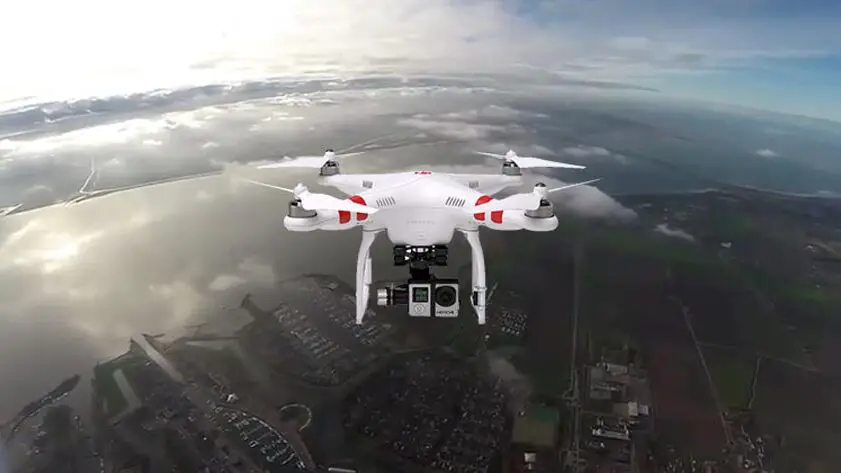
Flying in higher altitudes could increase your drone operating range by:
- Reduced air resistance: As the air is less dense at higher altitudes, the drone flies through less air resistance. This reduces the amount of power to battle air resistance and maintain flight and allows the drone to conserve battery life for long-range flights.
- Reduced signal interference: As the drone doesn’t encounter usual signal interference from obstacles, such as buildings or trees at higher altitudes, it can maintain a stronger and more stable connection.
- Stronger GPS signal: At higher altitudes, the drone can receive stronger GPS signals. Therefore, its navigation and positioning accuracy improves and reduces the likelihood of it losing its signal or experiencing navigational errors.
10. Upgrade your drone’s firmware.
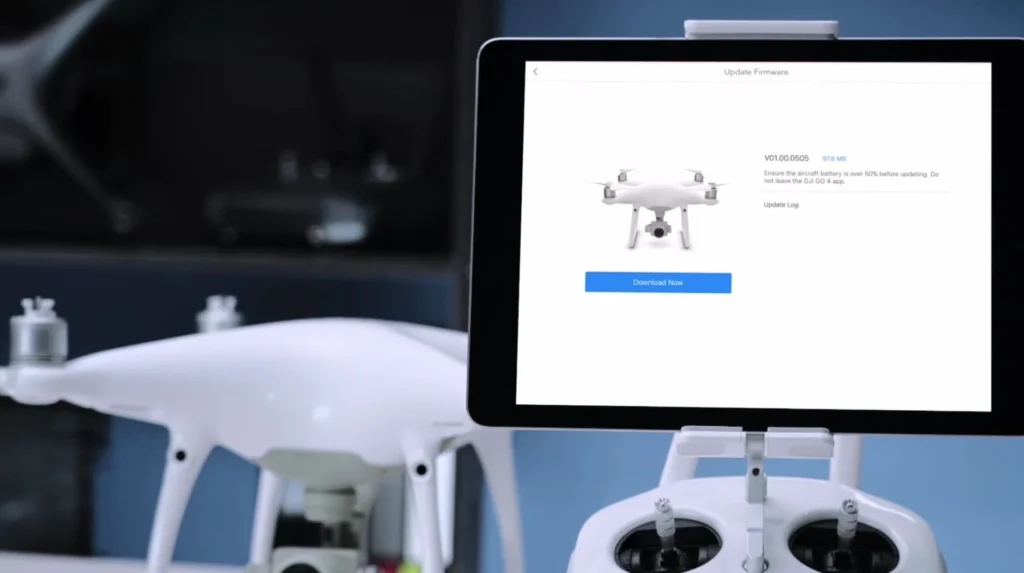
Upgrading the drone’s firmware improves drone components of performance and efficiency, fixes previous version bugs or glitches, and enables new features or capabilities that can help to extend flight time. Here are the ways that upgrading your drone’s firmware can help to increase drone range.
- Flight control algorithms update for improving stability and efficiency in the air.
- Communication protocol updates can improve by reducing the likelihood of signal interference.
- As firmware updates come with bug fixes that recent firmware had, so if recent firmware had bugs that affect the operating range would be fixed after updating the firmware.
11. Reduce the number of devices connected to your drone’s Wi-Fi.
If you have connected several devices to your drone’s Wifi network, it would cause shrinking bandwidth for connection between the transmitter. Reducing the number of devices connected to the drone’s Wifi could help you to increase the drone’s operating range because,
- Reduced interference for connection between the transmitter/ remote controller.
- More bandwidth for a higher data transfer rate and low latency.
- .More stabilized connection between the transmitter/ remote controller.
12. Optimize your drone’s power settings.
Optimizing the drone’s power settings would help with improving power and some other key factors for long-range distance flights. Below are some ways to optimize your drone’s power settings for long-range flights.
- Use a higher-capacity battery: By using a higher-capacity battery, your drone can distribute sufficient power required for components in long-range flights.
- Adjust the motor output: Some drones’ motor output settings are adjustable and they can be optimized to reduce power consumption and increase efficiency.
- Use 6″ and 7″ propellers. 6″ and 7″ propellers are ideal for long-range flights as they have more power and thrust through the air quickly.

